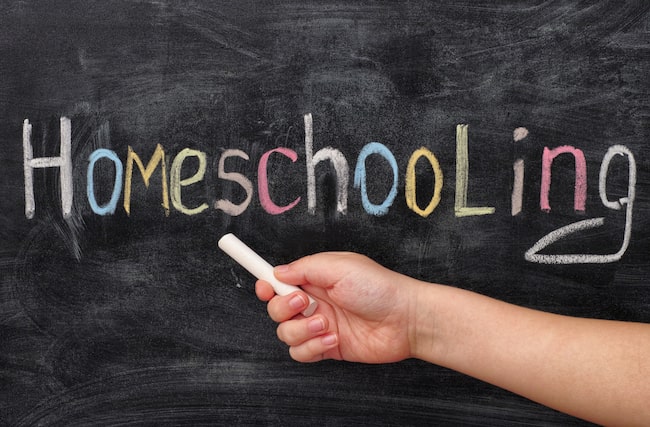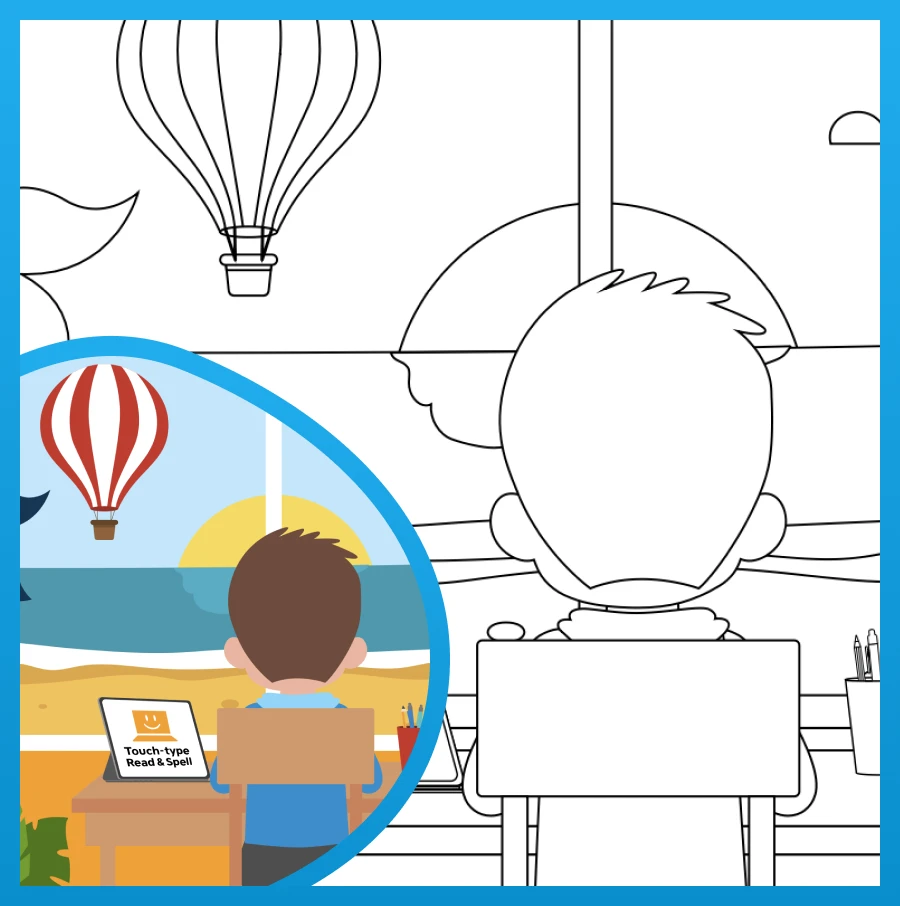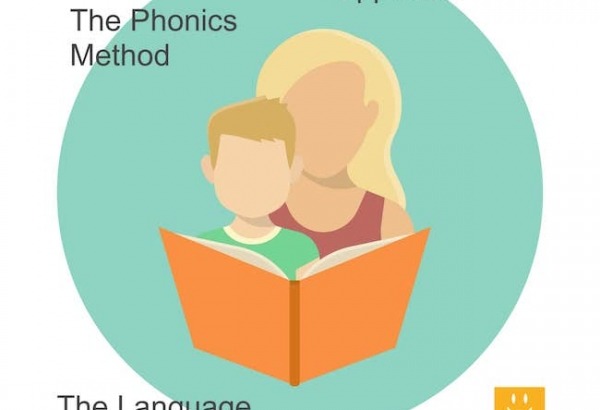How to build a homeschool reading program

Teaching reading is one of the first big challenges homeschool parents of younger children face. That’s because there’s a lot riding on successful literacy skills development. Learning to read is not only fundamental for the language arts part of your curriculum but necessary for most other subjects you teach.
This article will help you learn more about how reading works (and what phonics and spelling have to do with it), to help you choose the right reading resources and prepare your child for any bumps on the road to becoming a strong reader.
How reading works
Phonics
Many homeschool parents wonder if teaching phonics is the same as teaching reading. The term phonics comes from phonemes, which is another way of referring to the sounds of a language. Phonics is all about helping children build awareness of the sounds that make up the English language, so they can get better at pairing them with letters and letter combinations.
We already speak our first language when we start learning to read. Phonics is just a way of understanding how spoken language is written down. It’s particularly relevant in English given the irregularity of English spelling. For this reason, phonics is an essential element in the pre-K curriculum and should definitely be an early part of your homeschool reading program.
Decoding
When students first begin to read, they must learn to decode written language. This means identifying where one word starts and stops, pairing letters with phonemes, and sounding out words until a child recognizes the term they have just read.
Adults and proficient readers skip the decoding process because they’re so familiar with the words they read, their brains recognize them almost automatically. However, children need to build up this familiarity. In the beginning, much of their reading consists of the slow and laborious decoding of words.
Comprehension
Once we’ve understood the majority of the words in a sentence, we can start to make greater meaning of the text as a whole. Early reading comprehension exercises focus on constructs such as identifying gist, main ideas and specific details, and making inferences and predictions related to the reading.
Comprehension programs that involve pre-reading exercises, such as talking about titles and images, are particularly effective. They can activate a topic and help struggling readers with comprehension.

Vocabulary
Children learn most of their vocabulary through reading. They also learn how language functions in various contexts, when a word is part of a larger “chunk” of language and how words are related to each other.
That’s why learning through context is emphasized in every language curriculum, particularly over studying isolated lists of vocabulary. However, it’s difficult to expand breadth and depth in vocabulary if you don’t have a base vocabulary to facilitate reading in the first place!
Sight words
Have you ever heard of the Dolch list? If you’ve read The Cat in the Hat then both you and your child know some of the words it contains, as Dr. Seuss wrote the book using only sight words. The Dolch list has around 200 English articles, conjunctions, prepositions, adverbs, adjectives and verbs, which appear in 50-75% of all reading material for children (and 50% of adult reading material too!).
Homeschool readers can greatly benefit from learning to recognize the words on the list by sight, to skip decoding, speed things up, facilitate reading comprehension and help them take better guesses at the meaning of new words. You may consider adding the list of Dolch word nouns to your language arts program as well.
TOP TIP: TTRS has typing modules dedicated to Dolch words so children can learn to type them automatically and develop automatic recognition through repeat drills.

Spelling in the homeschool curriculum
Reading and spelling skills often develop together as the more children read and are exposed to repeat examples of a word, the easier it is for them to spell.
Spelling in English is hard. In fact, it’s much harder than in other languages because English is not always written the way it sounds. It’s also not that much fun to teach, given the inconsistencies in rules and the rote repetition required - learn more in creative approaches to teaching spelling and how to teach spelling.
For this reason, many homeschool parents choose to teach spelling via a computer program that can introduce typing skills at the same time, as this helps to strengthen reading ability.
You may be interested in these articles on helping kids learn to type and improving writing skills for your child.
FUN FACT: Multi-sensory learning is when you use sight, sound and touch at the same time to help teach a skill or new language. Homeschool children who are kinesthetic and auditory learners can greatly benefit from this kind of addition to their reading program!
6 Tips for teaching reading at home
-
Choose the right program. There are plenty of excellent programs out there for homeschool reading. Be sure you look into all of your options and choose a series with content your child will find interesting. You may want to begin with a phonics curriculum and bring some spelling materials in at the same time. The great thing about teaching language arts is you can change the content of your lesson without going up or down a level, to make every day’s learning new and exciting. Learn more about Orton Gillingham-based programs.
-
Balance practice with challenge. You don’t want everything your child reads to be easy, but you also don’t want to push them too far too fast. One of the best things about teaching reading at home is you can adjust your program based on what works for you and your child. Flexibility is key, so make sure you stay tuned in to what your child finds engaging and what may be exhausting them. You want reading to be a fun and positive activity and including easier material from time to time can give children just the confidence boost they need to tackle harder passages later on. Learn more about child-led learning.
-
Check reading materials for familiar vocabulary. Remember that too many unknown words on a page is not only challenging for younger readers but unhelpful when it comes to comprehension. It’s cognitively overloading to process a sentence in which more than 10% of the words are new and doing so can make even the most seasoned reader give up and close their book in frustration. Just imagine how you’d feel if you had to read in a second language and were forced to look up every other word! Learn more about common reading problems. EXPERT TIP: Have you heard of the five finger rule? Take a page in a book and put up a finger for each word you encounter which you don’t recognize. If you end up with five raised fingers, the material is a bit too hard for the moment.
-
Bring in graded readers. Authentic content and structured programs are great, but sometimes it can be a welcome relief to switch to a fun graded reader that feels less curriculum driven and is more enjoyable for your child. Graded readers are available by level and have been carefully constructed to provide just the right mix of familiar and new vocabulary. You may decide to use something that can be turned into a lesson on another subject, such as a historic fiction novel or a play, or simply let your child pick out a title that tickles his or her fancy. Learn more about fluency strategies for struggling readers.
-
Meet other parents who homeschool their children. Not only do other parents know the struggles of homeschool reading first-hand, but they can also share their favorite approaches and teaching resources with you. Learn more about different methods for teaching reading.
-
Learn about reading and be a role-model. Do your research! If you’ve read this post, you’re probably already aware of some of the steps young readers go through as they develop early literacy skills. The more you know about the various stages, the more you can encourage your child and introduce the right materials to support his or her learning at every step. The same goes for modelling the good reading behavior you want your child to emulate. Make sure you show your child how important reading is to you and read to them as often as you can!
When children struggle to read
Parents who homeschool their children are often faced with the dilemma of assessing the causes of delayed development in reading skills or reluctance to read. Keep in mind that children learn at different rates, particularly when it comes to reading. Your older child may have picked something up right away that takes your younger child an extra month or two to master.
Sometimes young readers need more time to go through the initial stages of literacy development. However, there could also be a learning difficulty, such as dyslexia, which is causing your child to struggle with reading. First, try to identify if it is the program you are teaching or some other factor, which might be causing delays. Change your curriculum and materials, consult other homeschool parents and if all else fails, get in touch with a specialist to see if they might be able to shed some light on the situation.
Do you have any suggestions on teaching children to read in a homeschool environment? Join the discussion!
For learners who struggle with spelling
TTRS is a phonics-based touch-typing program that strengthens spelling ability and builds confidence for children and adults who struggle with spelling.
Chris Freeman
TTRS has a solution for you
An award-winning, multi-sensory course that teaches typing, reading and spelling

How does TTRS work?
Developed in line with language and education research
Teaches typing using a multi-sensory approach
The course is modular in design and easy to navigate
Includes school and personal interest subjects
Positive feedback and positive reinforcement
Reporting features help you monitor usage and progress














